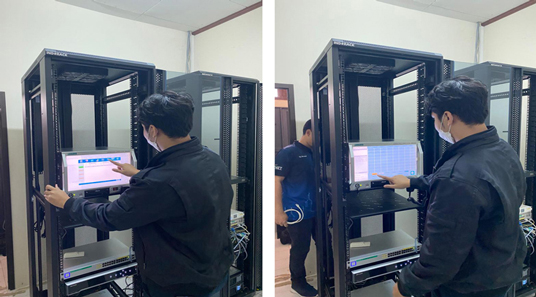

Leave a message




An IP network PA system is a new type of network technology that allows for efficient broadcast communication across multiple networks. It enables large-scale data transfer between networked computers, can simultaneously transmit multiple data packets, and can use multiple protocols for sending and receiving data, including audio, video, and images.
The biggest advantage of an IP network PA system is that it can save transmission bandwidth, reduce the risk of network performance degradation, and not interfere with other applications on the network, greatly improving network availability. In addition, the system can provide reliable data transmission services to ensure data security and reliability.

The main technologies of an IP network PA system include: sender, receiver, network protocol, data transmission algorithm, and network management program. The sender refers to the computer that sends data packets, while the receiver refers to the computer that receives data packets. The network protocol refers to the protocol for sending and receiving data packets, while the data transmission algorithm refers to the algorithm for sending and receiving data packets. The network management program is used to manage the network.

An IP network PA system has a wide range of applications, including video conferencing, remote education, video surveillance, online gaming, and internet TV, among others. It is also extensively used in entertainment and media industries to distribute audio, video, and data to enable users to receive the same content in different locations, greatly improving dissemination efficiency.
An IP network PA system has certain disadvantages, namely its requirement for large amounts of network bandwidth and susceptibility to interference that can affect transmission efficiency. Therefore, its use should take into consideration these factors and make appropriate adjustments to ensure reliability and efficiency.
 【DSPPA Demo】PAVA8000 EN54 Voice Evacuation SystemNovember 12, 2020Abstract: DSPPA PAVA8000 EN54 Voice Evacuation SystemToday, we are gonna show you a demo about our PAVA8000 EN54 Voice Evacuation System.PAVA8000EN54 Voice Evacuation System can not only support manua...view
【DSPPA Demo】PAVA8000 EN54 Voice Evacuation SystemNovember 12, 2020Abstract: DSPPA PAVA8000 EN54 Voice Evacuation SystemToday, we are gonna show you a demo about our PAVA8000 EN54 Voice Evacuation System.PAVA8000EN54 Voice Evacuation System can not only support manua...view The National Standard Approval Meeting held in BeijingJuly 19, 2019The National Standard Approval Meeting held in BeijingThe approval meeting of the National StandardTechnical standard of public address system engineeringis held in Beijing on July 16, 2019. Xue Chang...view
The National Standard Approval Meeting held in BeijingJuly 19, 2019The National Standard Approval Meeting held in BeijingThe approval meeting of the National StandardTechnical standard of public address system engineeringis held in Beijing on July 16, 2019. Xue Chang...view


